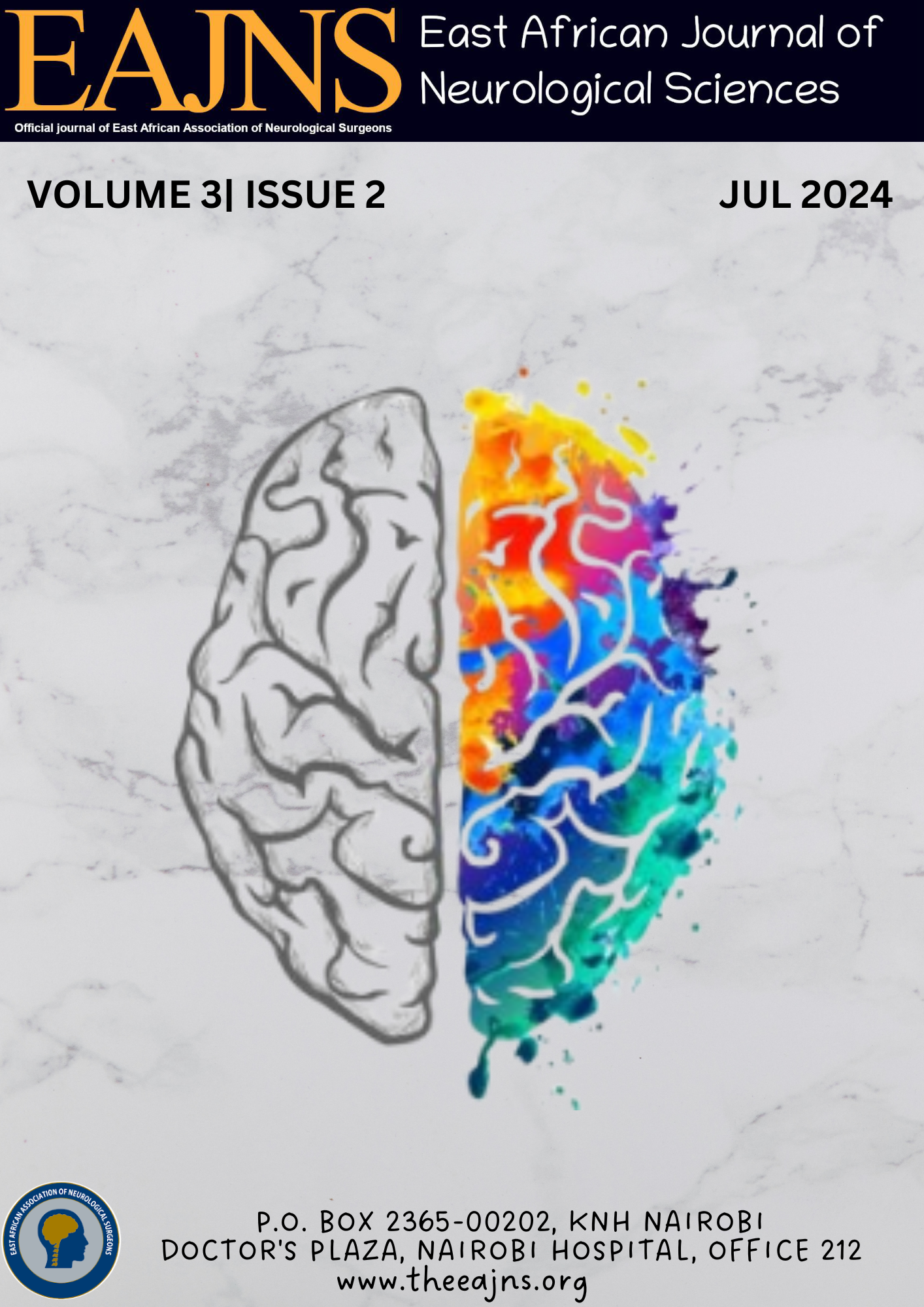Main Article Content
A radiological assessment of the morphology and morphometry of the Vidian canal in a select Kenyan population
Abstract
Background: The increased use of endoscopic approaches to the skull base has necessitated the identification of landmarks that assist in avoiding iatrogenic injury to structures within the skull base. The vidian canal (VC) is an established landmark for the petrous portion of the internal carotid artery (ICA). Although population differences have been reported in the literature, the area remains relatively unexplored in African populations. Materials and methods: Axial and coronal sections of 96 high-resolution computed tomography scans of Kenyan skulls were analyzed to determine VC morphometry. The VC length was determined using axial sections, and the VC - medial pterygoid plate (MPP) distance was determined using coronal sections. Results: The mean VC length studied was 16.50±2.30mm (10.50-22.40mm). No statistically significant differences were noted between sides (p=0.686) or sexes (p= 0.826, 0.593). The mean VC-MPP distance was 9.60±2.70 mm (2.40-21.40mm). No statistically significant differences were noted between sides (p=0.237) or sexes (p=0.886,0.850). The relational configurations of the VC to the SS were noted as follows: Type I (wholly within the cavity of the SS)-21.35%, Type II (VC on the floor of the SS or partially protruding into the SS) -76.57%, Type III (VC within the sphenoid corpus)- 2.08%. No significant correlation was noted between the type of VC configuration described and the side of the skull studied (p= 0.499). However, a significant correlation was noted between the type of VC configuration and sex (p=0.001). Conclusion: The increased prevalence of type I VCs among males indicates an increased risk during transsphenoidal surgical approaches in them.







